8+SAMPLE Executive Transition Plan
-
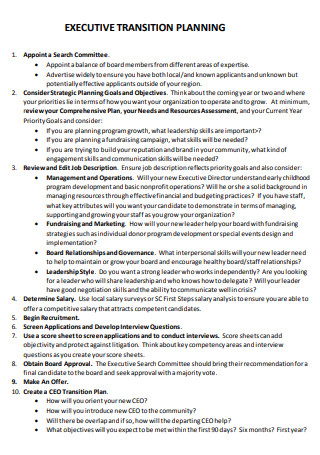
Executive Transition Plan
download now -
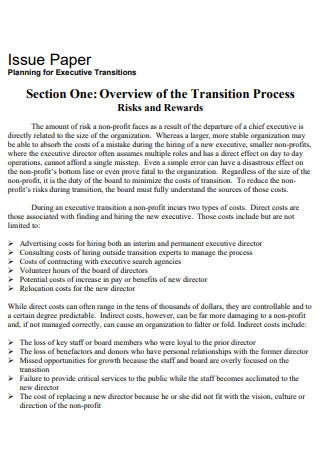
Plan for Executive Transition
download now -
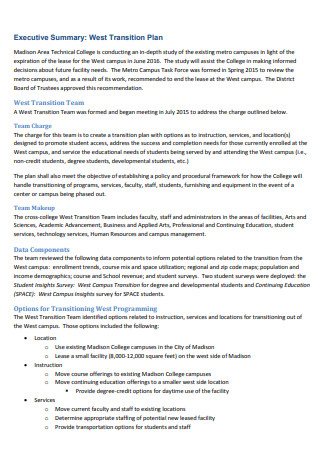
Executive Summary Transition Plan
download now -
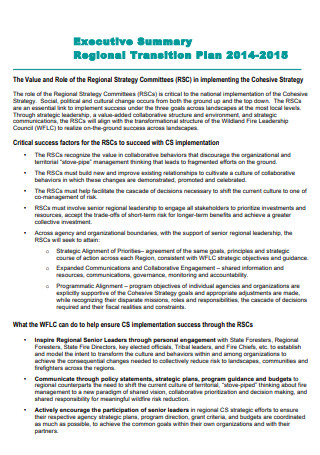
Executive Summary Regional Transition Plan
download now -
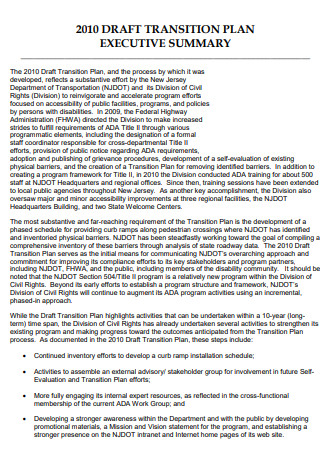
Transition Plan Executive Summary
download now -
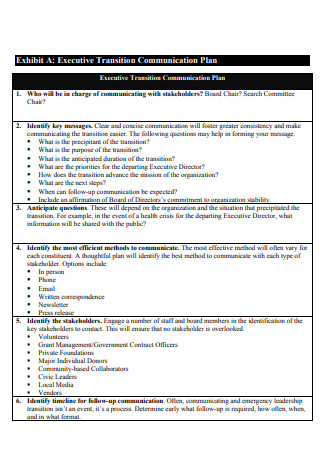
Executive Transition Communication Plan
download now -
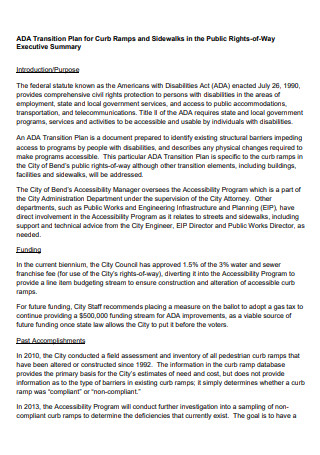
Transition Plan Public Executive Summary
download now -
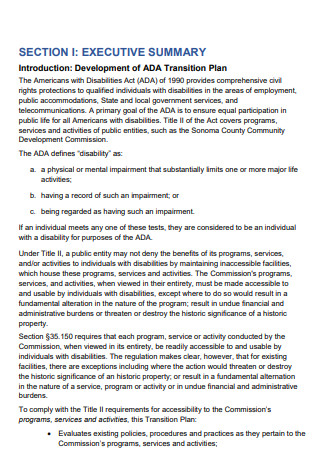
Executive Development Transition Plan
download now -
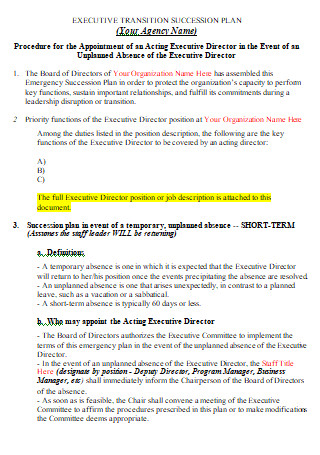
Executive Transition Succession Plan
download now
FREE Executive Transition Plan s to Download
8+SAMPLE Executive Transition Plan
What Is an Executive Transition Plan?
Tips for Job Transition Plan
Roles and Responsibilities of an Executive Position
How to Write an Executive Transition Plan
FAQs
What skills are required for a transition manager?
What is the importance of a job transition plan?
Why is it important to plan for a leadership transition?
What Is an Executive Transition Plan?
A transition plan is a document that assists businesses in navigating changes such as leadership retirement or resignation, structural changes within a company, mergers with other enterprises, or transitions between phases of business planning. The process of handling the departure of one leader and selecting the next involves inherent hazards, depending on the organization’s stability. Of course, the most obvious danger is appointing the incorrect future leader, which might jeopardize the organization’s existence. A sample executive transition plan has been prepared for you as additional information on the contents of the document.
Tips for Job Transition Plan
A plan is meant to prepare and help the reader understand what they will be getting themselves into. And an executive role is not a mere walk in the park. It is a serious business that would need the utmost dedication and attention to not misinterpret the contents of the plan. Creating an executive onboarding plan will take a while before you can complete it. But not to worry because this article will share some tips for creating a job transition plan which is applicable not just to executive transitions.
Roles and Responsibilities of an Executive Position
The functions and responsibilities of a Chief Executive Officer will vary greatly depending on the company, industry, and size of the business. In general, a CEO may be required to do the following duties, which have been compiled below. Keep this in mind when you are conducting your search for the next individual to fill in the available executive roles within your company. Do remember that the curated list below does not merely limit your executive search and they should still go above and beyond for the role they will be acting as.
How to Write an Executive Transition Plan
Executive transition plans are blueprints that charities create to help them through the departure of an executive director, whether it is planned or unanticipated. The greatest nonprofit transition plans are comprehensive papers created with the organization’s future in mind. These plans are often developed as a collaborative effort among the highest-ranking employees and are subject to board approval. Your executive transition strategy will differ from that of another organization based on the characteristics of your nonprofit. You can view the executive plan example to get a better idea of the structure.
1. Understand the Executive Director’s Function
Many variables influence the function of the executive director at your nonprofit. These include your organization’s history, mission, and future vision, among other things. Executive directors have diverse responsibilities in building company culture and success depending on the nonprofit. This implies that the sort of executive director your organization sought when your current leader was hired may not be the type of leader you seek during your current executive search. Coming together to reassess the type of executive director your charity is seeking should be a fundamental component of your team’s executive transition strategy.
2. Align Your Vision with the Board
This goes well beyond merely recognizing the type of person the board wishes to see run the charity, but delves deeply into common strategies for successfully introducing your organization’s next top executive. Board members are not only important parts of your nonprofit’s staff, but they are also some of your most significant fundraising assets. Some are major supporters of your cause, while others are frequently on the front lines getting presents from sought-after prospects. The most common error a nonprofit may make during a CEO transfer is neglecting to involve its board in the planning process.
3. Create Executive Transition Strategies for All Sorts of Departures
Replacing an executive director is one of the most difficult jobs a nonprofit will face, regardless of the circumstances. Managing the transition of leadership might appear to be a dangerous balancing act, whether it is an anticipated leave or an unanticipated shift. As your organization develops its formal executive transition plan, it’s critical to understand the many sorts of successions that your team may face so that your strategy can appropriately anticipate each possibility. For your plans, the three main forms of executive transitions are emergency transition, scheduled departure, and deliberate transition.
4. Cultivate Internal Leaders of Your Executive Transition Plan
One of the most difficult obstacles that new executive directors confront when they begin their work at a charity is a failure to fit in with the organization’s culture. Similarly, these executives may struggle to establish a place for themselves within the nonprofit’s current ties. In any event, challenges like these might create significant impediments to the new executive’s performance as a leader. Even among high-level staff workers in the charity sector, there is a lot of churns. However, a fantastic method to counteract this issue and reduce the potential of conflict when taking on a new executive director is to prioritize mentorship and nurturing of future leaders inside your own company.
5. Choose a New Executive Leader and Complete the Transfer
Finally, the methods for conducting a rigorous executive search among a pool of suitable applicants should be specified in your nonprofit’s executive transition strategy, as should details on how you’ll finalize the selection of your new executive director. In an ideal world, the CEO search process would last at least nine months. The first six months should be spent by your organization prospecting for the post, followed by applicant interviews to choose the front runner. Consider finalizing the search to ensure continued success even after the transition of executive positions.
FAQs
What skills are required for a transition manager?
A transition manager’s principal responsibility is to gather and evaluate change requests. Transition managers are in charge of planning and supervising the transfer of pertinent information for solution support, acceptability, and operation. Project management expertise, as well as transition paperwork, tools, and templates. They must also have outstanding interpersonal and communication abilities as well as strong analytical abilities. This goes without saying that having excellent time management and organizing abilities is also better than having someone who lacks management abilities. You can use this information as part of your executive transition checklist to better the search for the next executive role.
What is the importance of a job transition plan?
Making a comprehensive strategy may make it easier to contact your supervisor if necessary in the future. Because your plan can assist your supervisor in reassigning your work or training successors, they may be more ready to assist you as well. This strategy can also provide physical evidence to your supervisor of the importance of your work and your dedication to the task. Outlining your responsibilities and initiatives might help people remember your abilities. This demonstration of skill may make it easier for you to obtain an outstanding letter of recommendation from them. They could be ready to serve as a reference for you as well.
Why is it important to plan for a leadership transition?
The transfer of leadership is a vital stage in the life of any business. Leadership transitions provide companies with the chance to assess where they are and where they want to go in the future, and, ultimately, to choose the sort of leaders who will help them get there. Almost nothing in a corporation is more significant than a high-level leadership move. Because of the nature of the position, a new senior leader’s actions or inactivity will have a substantial impact on the direction of the organization, for better or worse. This goes without saying that planning ahead definitely helps you to address the concern once it comes into existence.
Filling in leadership roles is an important part of setting up a successful company. But this does not entail that you merely choose anyone available to fill the role. As part of your executive retirement transition plan, you must create a plan that is prepared for the worst while also acknowledging the potential best scenario. A transition strategy needs to be smooth so that both sides, the departing executive and the new upcoming executive are both on the same page. What are you waiting for? Select a template now and start writing or filling up the content and have it ready for the next executive transition!
